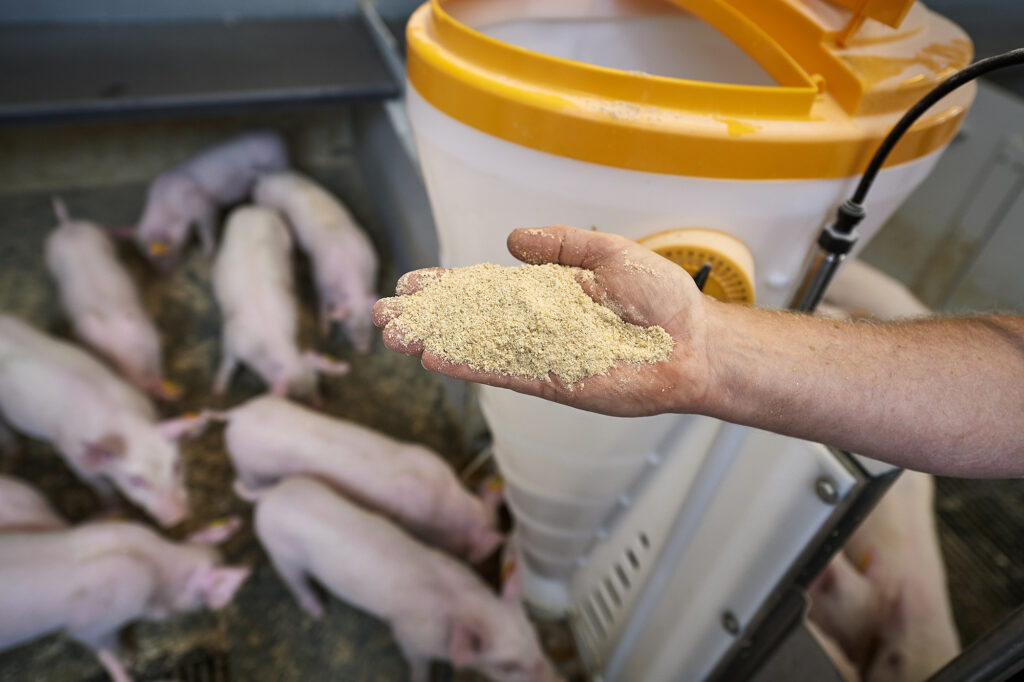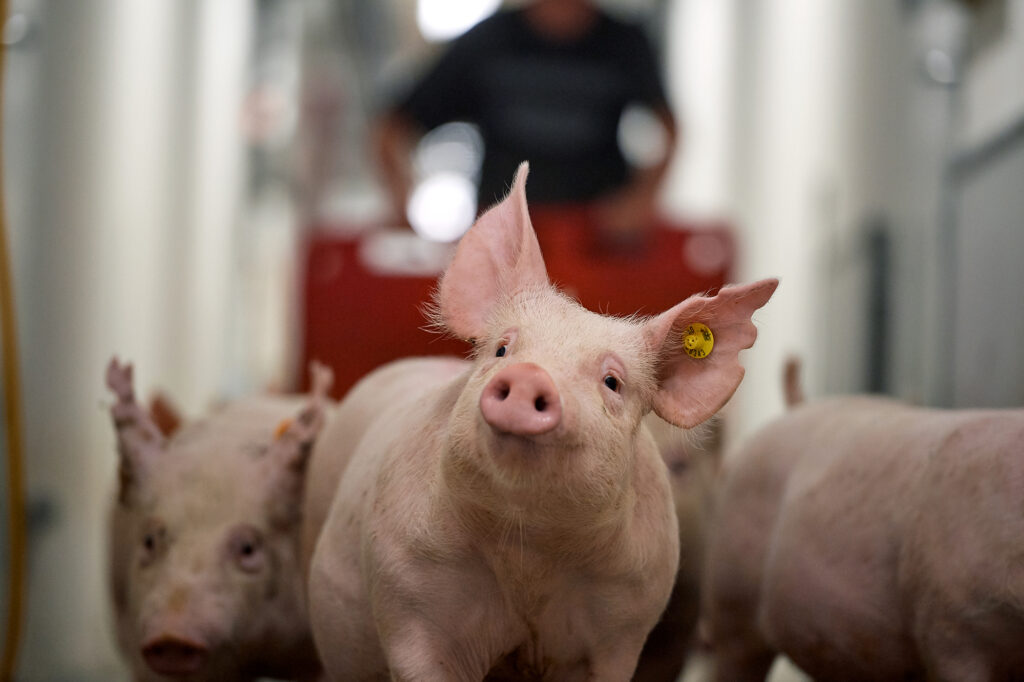Feeding DanBred Gilts
The breeding gilt is a very valuable animal as it forms the basis for future production in the herd. Whether the gilt is bought in or home-reared, careful attention to the feeding of the DanBred gilt in the weight interval from 30 kg until mating will set a prime starting point on the road to releasing the genetic potential.
Production targets
- 150-165 kg of weight in the insemination period
- 13-15 mm of backfat in the insemination period
- 210-230 days of age in the insemination period
- Gilts should be mated in their second heat
- Gilts should be fed restrictively from around 30 kg
Body condition & Weight
DanBred gilts come with a huge potential for daily gain, why is advised to focus on limiting the growth rate for the DanBred gilts as moderating the growth rate for replacement gilts has shown to be positively correlated with sow longevity, since reduced growth rate has a positive effect on especially bone growth, and a stronger body and stronger legs will reduce the risk of early culling in breeding animals.
Aiming for a gain of around 900 g/day from 30kg to 150kg has shown to give the best possible basis for long-term reproduction productivity.
Restricted feeding is recommended, as it is an easy way to regulate daily gain. Feeding gilts ad libitum can increase the risk of daily weight gain exceeding recommendations, especially when feeding diets with moderate or high protein content.
As the body fat content can play a role in the onset of puberty and oestrus, it is important to aim at a backfat target not less than 13 mm – the optimum is 13-15 mm.

* Backfat target at the time of mating, when measured at the point P2.
Nutrient requirements
DanBred gilts have a huge potential for growth, which is why the feed energy level is a very important factor. To efficiently control daily gain, crude protein and lysine supply must be reduced.
Phase feeding of DanBred gilts will secure good longevity and lifetime productivity. Feeding DanBred gilts according to one of the following feeding scenarios will assure optimised performance and fitness of the gilts.
| Scenario 1 | Gilts 30-60 kg | Gilts 60-110 kg | Gilts >110 kg |
|---|---|---|---|
| Scenario 2 | Gilts 30-85 kg | Gilts 85-110 kg | Gilts >110 kg |
 |
 |
| Feed and feeding are the foundation for gilts’ growth, conformation and general health. Gilts’ feed must take into account their actual needs with a special focus on leg and bone strength, whilst also ensuring an optimised growth rate. | |
To promote greater backfat deposit, the diet should be changed when the gilts weigh around 110kg. This can be done by keeping the energy density but reducing protein and lysine content in the feed ration. Moreover, it is recommended to feed the gilts based on body condition.
Moderating growth and increasing fat deposits through feeding will give a gilt that is not as heavy but is slightly fatter at first service.
The basic nutritional requirements for DanBred sows are described below. The requirements are based on production in a temperate zone, adaption for the relevant climate may be necessary.
| Energy, per kg feed | Gilts 30-60(85) kg | Gilts 60-110 kg | Gilts 85-110 kg | Gilts > 110 kg |
|---|---|---|---|---|
| MJ ME/kg feed | 13.0 | 12.8 | 12.7 | 12.5 |
| MJ NE/kg feed | 9.8 | 9.7 | 9.6 | 9.4 |
| Danish Feed Units (FU) sow/kg | 1.07 | 1.05 | 1.04 | 1.02 |
| Basic nutrients, digestible per kg | ||||
| SID protein. min g/kg | 126 | 105 | 94 | 82 |
| Lysine. SID g/kg | 8.2 | 6.3 | 5.2 | 4.1 |
| Digestible phosphorus g/kg | 3.2 | 2.4 | 2.4 | 2.0 |
| Calcium, g/kg (at 0 FTU phytase) | 8.6 | 7.4 | 7.3 | 7.3 |
Mineral and vitamin supply should be adequate to ensure normal bone development and general health. Soluble, as well as insoluble fibres, should be added to maintain gut health.
The full nutrient tables for gilts can be found here.
Feeding strategy
DanBred gilts come with a huge potential for daily gain why it is advised to prioritise feeding 2 to 3 times per day. Restricted phase feeding of the DanBred gilts following the recommended feeding curve is an ideal solution to ensure a balance of the feed amount in relation to age and weight.
 |
 |
| The objective of feeding during this period is to optimise gilt development, initiation of puberty and the onset of the oestrus cycle as well as support the pre-pubertal mammary development and maximise the productivity of litter size and longevity. | |
The figure below describes the feeding of gilts until the first service. Keep the target of 13-15 mm backfat at mating in mind throughout the full development period.
Gilts that fall behind from around 90 kg, can be fed with app. 3,25 kg of the diet from gilts above 110 kg.

Keeping the gilts on target with careful attention to their development will be rewarded in the farrowing unit and set a prime starting point on the road to releasing the genetic potential for consistently high lifetime productivity.
